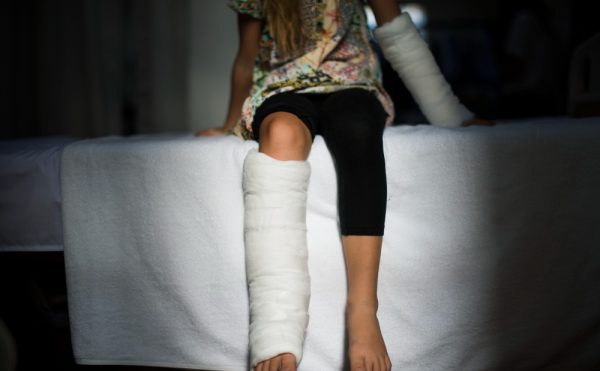A testosterone replacement therapy lawsuit is a lawsuit that claims that some producers of testosterone replacement drugs failed to warn people about the serious side effects of using these drugs. This has become a serious problem in America for the past few years. Looking for more information? Without further ado, read this post!
What is Testosterone Replacement Therapy?
Testosterone plays a significant role in numerous bodily functions. It is an important hormone for men that controls sexual development during puberty. It also helps to maintain bone density, fat distribution, muscle mass, as well as sperm production. Males with low T levels may have problems with these processes.
Starting around the age of 30, men begin to experience a decline in testosterone production. Men with low testosterone levels are complaining of low energy, difficulty concentrating, and reduced sex drive. In light of these issues, testosterone replacement therapy (TRT) offers the opportunity to boost testosterone levels.
Testosterone replacement therapy is also known as androgen replacement therapy (ART). It is a treatment that doctors give to men with testosterone deficiency who show symptoms of hypogonadism or abnormally low testosterone levels.
It is said that taking a testosterone prescription, can help restore the levels of the male hormone in the blood and reverse the symptoms of low testosterone. In addition, people who take it may experience improved alertness, sexual function, energy, mood, and overall well-being.
Types of Testosterone Replacement Therapy
In general, there are several ways that men can get testosterone replacement therapy. Usually, your healthcare provider will prescribe whichever method is most convenient for you. They will also try to prescribe the least expensive type of therapy. Below are some types of testosterone replacement therapy.
1. Androderm
This is a testosterone patch that you wear every day. It will gradually release the testosterone into your body through your skin. The hormone then goes into your bloodstream.
The purpose of this process is to slowly increase your T levels until you reach the maintenance therapy. However, the risks of using this Androderm method are concerning as it can lead to heart attacks, strokes, and blood clots.
2. Injectable testosterone
Many people prefer injections as you only need to get an injection about once every 10 weeks. Typically, the side effects of injectable testosterone include decreased energy levels, libido, and mood. You may also get breast tenderness if you use this method. Is it related to the testosterone replacement therapy lawsuit? Who knows.
3. Topical
Testosterone creams and testosterone gels are fairly popular among men with low testosterone levels. There are fewer serious side effects with topical use. However, you should be careful not to touch children and pregnant women while the cream or gel is in your hands. Why? Because the products could be harmful to them.
4. Intranasal
This method involves a small testosterone patch that you place inside your nostrils up to three times a day. Unfortunately, this action is somehow avoidable by most patients. The reason is that it can cause headaches, nosebleeds, runny nose, and nasal discomfort.
5. Implants or Pellets
If you use this method, your doctor will later inject small pellets of testosterone into your hips or buttocks. Additionally, if you choose this type of therapy, then you will have to undergo this therapy every three to six months, depending on your testosterone levels. This seems to be the safest method of TRT.
6. Cheek or Buccal Patch
The method of this type of therapy entails sticking a small patch inside your cheek on your upper teeth at least twice per day. However, when choosing this method, there will be some side effects of the buccal patch that you may experience, such as headaches and sores on the gums or mouth.
Risks of Testosterone Replacement Therapy Use
Research from the medical journal PLOS One and a paper published in the Journal of the American Medical Association (JAMA) explains that testosterone replacement products are closely linked to an increased risk of cardiovascular events in men.
The study published in the PLOS One journal concluded that men aged 65 years and above who used prescribed testosterone therapy products had double the risk of having a heart attack within the first three months of using the product.
More so, the JAMA study also found that elderly men who used testosterone replacement products were 30% more likely to have a disease. Some of them are heart attack, stroke, or death when compared to elderly men who did not use such medications.
Apart from causing side effects such as heart attack, stroke, or death, there are several other side effects of using testosterone replacement products. Here they are:
- Worsening of enlarged prostate symptoms
- Increased prostate cancer risk
- Lower sperm count
- Swelling of the ankles, legs, and body
- Breast enlargement and pain
- Breathing difficulties during sleep
- Increased risk of venous thrombosis occurring in the legs
Testosterone Replacement Therapy Lawsuit
At the peak of testosterone litigation, there were more than 25,000 lawsuits filed against AbbVie Inc, Eli Lilly & Company, GlaxoSmithKline, Pfizer Inc, Actavis, Endo International, and other producers. This testosterone replacement case also involves popular products like AndroGel, Depo-Testosterone, Foresta, Testim, and others.
In the lawsuits, it was claimed that men who used the drugs experienced side effects such as heart attacks, strokes, and blood clots called pulmonary embolism and deep vein thrombosis. Most injuries, except death, must occur within 90 days of using the product for someone to sue.
Allegations in a testosterone replacement therapy lawsuit range from failure to warn consumers of the dangers of their testosterone products to breach of warranty. In addition, specific charges filed against the defendants mentioned above include:
- Drug producers failed to warn patients and urologists about the potential risks of their testosterone products
- Negligence
- Design defects
- Misleading marketing efforts or off-label use
- Breach of express and implied warranties
Have You Learned About Testosterone Replacement Therapy Lawsuit?
This ends the explanation about the testosterone replacement therapy lawsuit. However, the notoriety of testosterone replacement products has gained special attention after myriad lawsuits due to the side effects of their usage. If you are one of a victim of these products, hiring a product liability attorney can be a huge help.
Bagikan










